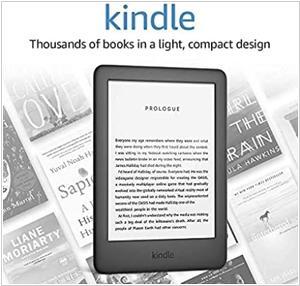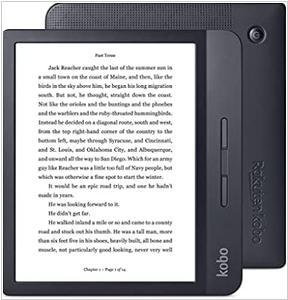Kindle Ereader vs Kobo Libra
Last updated: July 10, 2023
Kindle Ereader and Kobo Libra are both popular eReader devices that offer distinct features and reading experiences. Here are the key differences between the two:
One significant difference lies in their ecosystem and content availability. Kindle Ereader is tightly integrated with Amazon's Kindle ecosystem, offering seamless access to a vast library of eBooks, audiobooks, and periodicals through the Kindle Store. It provides users with a wide range of options to purchase and borrow books, and it offers features like Whispersync, which allows readers to synchronize their progress across devices. On the other hand, Kobo Libra is integrated with the Kobo ecosystem, providing access to a diverse collection of eBooks through the Kobo Store. Kobo Libra supports various eBook formats, including EPUB and PDF, allowing users to access content from other sources as well. The choice between the two may depend on personal preferences for content availability and ecosystem integration.
Another key difference lies in their design and physical attributes. Kindle Ereader typically features a sleek and minimalistic design, with a lightweight build that makes it comfortable to hold for extended reading sessions. It often incorporates physical page-turn buttons for easy navigation. Kobo Libra, on the other hand, features an ergonomic design with a comfortable grip and physical page-turn buttons on the side. It offers a larger 7-inch E Ink Carta display, providing a spacious reading area. The design and physical attributes of the devices may be a determining factor for readers who prioritize one-handed use, ergonomic grip, or a larger screen size.
Additionally, there may be differences in their software features and customization options. Kindle Ereader provides users with features like X-Ray, which offers insights into characters, places, and terms mentioned in the book. It also supports Amazon's proprietary font, Bookerly, designed specifically for reading on digital screens. Kobo Libra offers features like ComfortLight Pro, an adjustable front light that allows readers to customize the screen brightness for comfortable reading in different lighting conditions. It also provides extensive customization options for font styles, sizes, margins, and reading themes. Users who value specific software features or customization options may find the features of one device more appealing.
One significant difference lies in their ecosystem and content availability. Kindle Ereader is tightly integrated with Amazon's Kindle ecosystem, offering seamless access to a vast library of eBooks, audiobooks, and periodicals through the Kindle Store. It provides users with a wide range of options to purchase and borrow books, and it offers features like Whispersync, which allows readers to synchronize their progress across devices. On the other hand, Kobo Libra is integrated with the Kobo ecosystem, providing access to a diverse collection of eBooks through the Kobo Store. Kobo Libra supports various eBook formats, including EPUB and PDF, allowing users to access content from other sources as well. The choice between the two may depend on personal preferences for content availability and ecosystem integration.
Another key difference lies in their design and physical attributes. Kindle Ereader typically features a sleek and minimalistic design, with a lightweight build that makes it comfortable to hold for extended reading sessions. It often incorporates physical page-turn buttons for easy navigation. Kobo Libra, on the other hand, features an ergonomic design with a comfortable grip and physical page-turn buttons on the side. It offers a larger 7-inch E Ink Carta display, providing a spacious reading area. The design and physical attributes of the devices may be a determining factor for readers who prioritize one-handed use, ergonomic grip, or a larger screen size.
Additionally, there may be differences in their software features and customization options. Kindle Ereader provides users with features like X-Ray, which offers insights into characters, places, and terms mentioned in the book. It also supports Amazon's proprietary font, Bookerly, designed specifically for reading on digital screens. Kobo Libra offers features like ComfortLight Pro, an adjustable front light that allows readers to customize the screen brightness for comfortable reading in different lighting conditions. It also provides extensive customization options for font styles, sizes, margins, and reading themes. Users who value specific software features or customization options may find the features of one device more appealing.
25
Basic 6-inch Kindle e-reader uses an electronic ink screen that looks and reads like real paper. The matte screen reflects light like ordinary paper and uses no backlighting, so you can read as easily in bright sunlight as in your living room. Unlike tablet screens, Kindle has no glare.
26
Kobo Libra is the embodiment of your reading style. With more storage, a faster E Ink screen, and Bluetooth wireless technology so you can listen to Kobo Audiobooks, Kobo Libra is an integral part of your rich reading life. Packed with features and personality and storage for all of your eBooks Kobo Libra was made to do more. An ergonomic design keeps your reading life on hand and page turn buttons keep the story going while you sip your coffee, stir your signature pasta sauce, or nurse your newborn so you can read on and on, no matter what.
Kindle Ereader vs Kobo Libra in our news:
2024. Kindle update improves settings adjustment
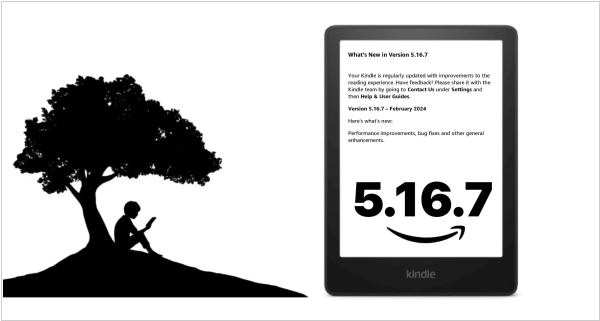
Amazon has rolled out firmware update 5.16.7 for its modern Kindle e-readers, encompassing models such as the latest Paperwhite, Scribe, and base Kindle. This update primarily focuses on maintenance rather than introducing new features or functionalities, with improvements aimed at performance, bug fixes, and general enhancements listed in the change log. Notably, the previous update brought a slew of new features to the Kindle, including revamped settings for easier navigation and adjustments, the addition of a "Date and time" setting under "Device options" for manual or automatic time setting, and a dedicated folder for storing screenshots. It is likely that the 5.16.7 update addresses lingering bugs from the previous release, with some users reporting extended battery life as a result.
2023. Amazon improves internet browser on Kindle e-readers
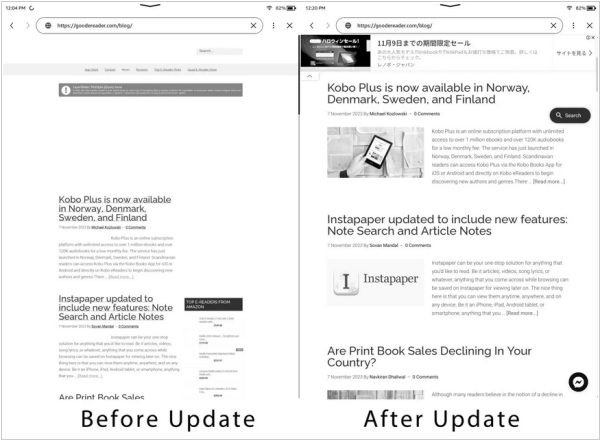
Amazon quietly introduced an improved internet browser for 10th and 11th-generation Kindle e-readers as part of the new 5.16.4 update. Although Amazon didn't officially announce the enhanced browser functionality, they did mention improvements made to Goodreads for better performance on E INK screens. Good e-Reader conducted various tests since Amazon didn't disclose specific details about the browser changes. Notably, the updated browser now loads websites faster, enhances text readability, and allows users to interact with cookie-acceptance popups. Layouts and CSS issues on websites like Wikipedia have been resolved, and users can now access email services like Google Mail. Amazon has also added new bookmarks for social media networks, including X.
2023. Rakuten unveiled Kobo Libra 2
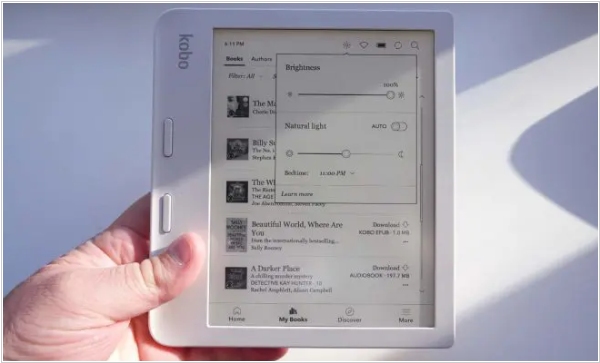
Rakuten Kobo has unveiled the Kobo Libra 2, featuring a 7-inch HD E Ink Carta 1200 touchscreen display with a resolution of 1264 × 1680 pixels or 300 PPI. This e-reader offers color temperature adjustment and Dark Mode, allowing users to customize their reading experience. Powered by a 1 GHz Processor and equipped with 32 GB of onboard storage, the Libra 2 has a distinctive asymmetrical design, with a thicker right spine housing physical page turn buttons. Additionally, it boasts a fully waterproof construction and is available in Black and White variants. Customers can also purchase optional SleepCovers for $50. The Kobo Libra 2 is priced at $250 and is accessible for purchase through Flipkart and various online retailers in India.
2023. Send to Kindle is losing MOBI support
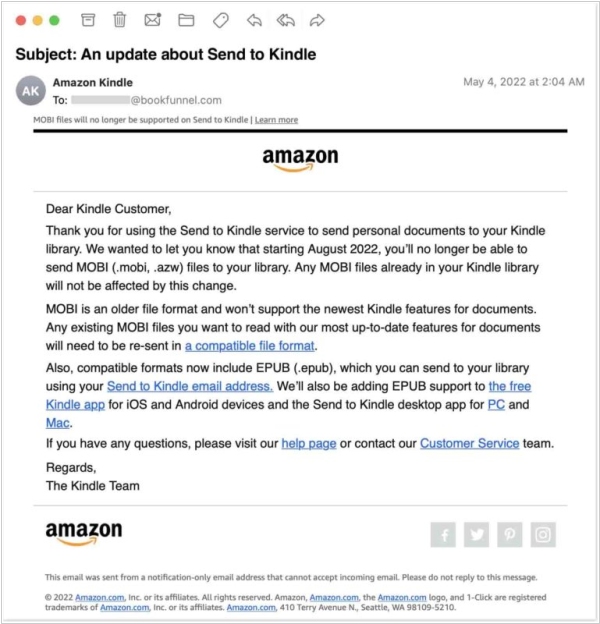
Amazon has initiated the distribution of emails to their customers, issuing a "Final Reminder" regarding the discontinuation of MOBI file format support (.AZW, .MOBI, .PRC) for their Send to Kindle service, which will take effect later this year. Initially, Amazon announced that they would cease MOBI format support in "late 2022," but this deadline was later revised to "early 2023." Despite these initial estimates, Amazon continued to support MOBI formats well into September 2023. According to the updated schedule, Amazon intends to commence the process of "phasing out support" for sending MOBI files to Kindles and Kindle apps via Send to Kindle on November 1st, 2023.
2023. Kindle e-readers get List view option for Collections
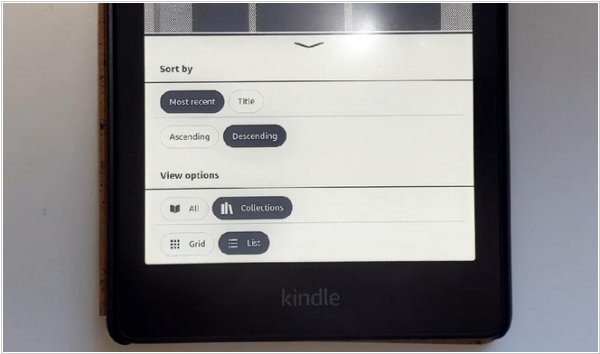
The latest firmware update Kindle introduces a new feature within the Collections view – List mode. Previously, the Library section provided options for Grid view and List view, while Collections only supported Grid view for reasons known to Amazon. However, this recent update now offers the List view option for Collections as well. This addition allows users to organize their content according to their preferences. While some may not find this change significant, many users will appreciate the ability to display their e-books in list format within their collections. Interestingly, despite both the Kindle and the Kindle Scribe receiving the update simultaneously, the List view option for Collections remains unavailable on the Kindle Scribe. There is a possibility that Amazon has distinct plans for the Scribe, and it is hopeful that the List view feature for Collections will eventually be introduced to the Scribe along with other Scribe-specific enhancements in the future.
2022. New basic Kindle offers premium Paperwhite features for under $100
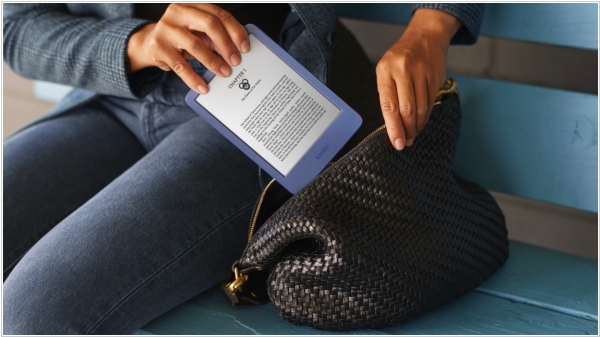
Amazon has introduced a new 6-inch Kindle that is hailed as its "lightest and most compact" e-reader yet. Although it joins Amazon's regular Kindle lineup, its specifications align more closely with the $139.99 Paperwhite model. It incorporates several features from the premium lineup, including a high-resolution display of 300ppi for sharp text and graphics, a dark mode, and USB-C charging. Notable improvements include a battery life lasting up to six weeks per charge, 16GB of storage (twice the capacity of its 2019 predecessor), and the return of the adjustable front light. Impressively, this new Kindle is priced at just $99.99, a mere $10 increase from the previous generation, making it an enticing option for those seeking an upgrade from older models that lost the ability to browse, borrow, or purchase books directly from the Kindle Store last month.
2021. Kindle update brings new navigation options
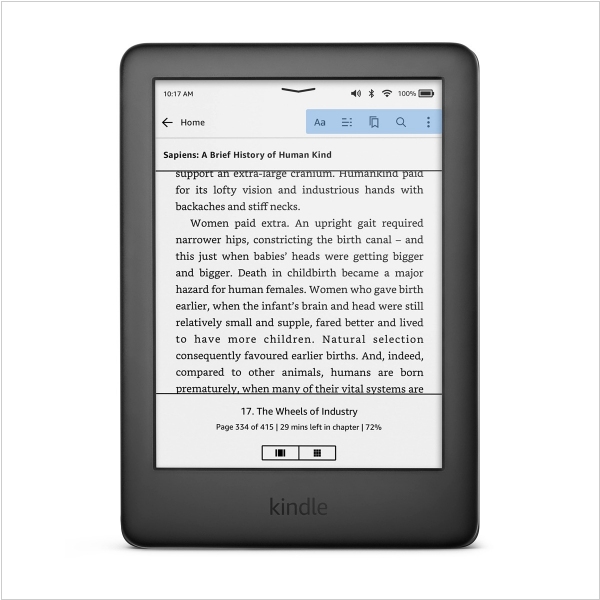
Amazon has rolled out a new software update, version 5.14.1, for Kindle ereaders, introducing further modifications to the navigation system while reading ebooks. This update follows the previous 5.13.7 version that brought significant changes to the user interface but also resulted in the removal of the back button, causing some issues. To address this, Amazon has introduced a new feature: a go back box that now appears at the bottom of the screen whenever navigating to a different section of a book. This addition aims to improve the user experience and alleviate the problems caused by the previous update.
2021. Kindle Special Offers no longer show ads on the home screen
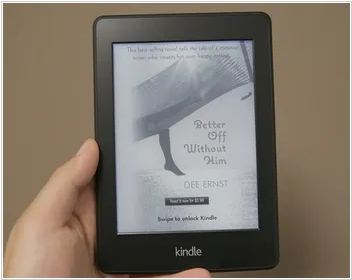
The Special Offers program has been implemented on various Kindle models, offering a discounted price of around $25 to $30 in exchange for displaying advertisements on the lock screen and home screen. However, Amazon has recently released the 5.13.7 firmware update, which introduced significant changes to the home screen. One notable improvement is the complete removal of ads from the home screen, leaving them only visible when the Kindle is in sleep mode. The new home screen design presents the current book being read along with the reading progress. It also showcases cover art images of a few other books and provides text-based information. Additionally, the recommended reads section offers suggestions based on previously purchased books. The user interface now lacks sufficient space to accommodate advertisements, leading to their omission from the home screen.
2021. Kindle 3G internet will no longer work since 2022
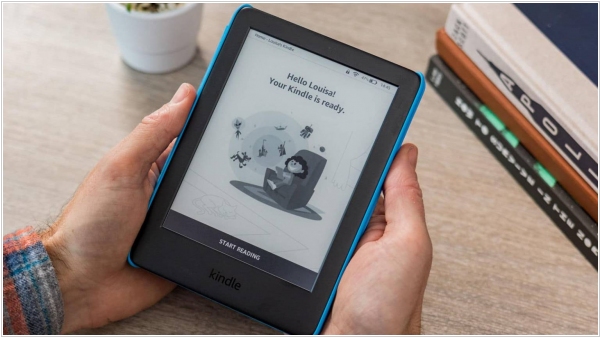
In 2017, Amazon introduced the original Kindle, which offered 3G internet access. This feature allowed Kindle users to connect to the nearest cellphone tower providing 3G data, enabling them to access the bookstore and Wikipedia. However, starting from next year, this capability will become obsolete. Network telecommunication companies worldwide are beginning to shut down their 3G networks and repurpose the frequencies for 4G/LTE and 5G technologies.
2021. Kindle can now display book covers on the lock screen
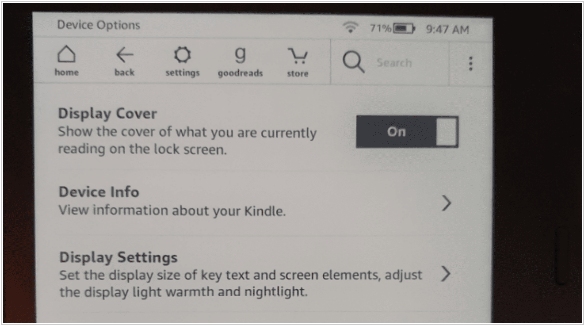
Amazon has released a firmware update enabling Paperwhite, Oasis, and the entry-level Kindle to showcase ebook cover art on the lock screen while the e-reader is in sleep mode. This highly requested feature has been sought after for over a decade and has even prompted Kindle users to resort to jailbreaking their devices. The update displays the cover of the ebook you are presently reading, as reported early on. It supports both Amazon-purchased content and sideloaded ebooks, providing a versatile experience for users.
2019. Kobo brings the Forma form factor to a cheaper model Kobo Libra
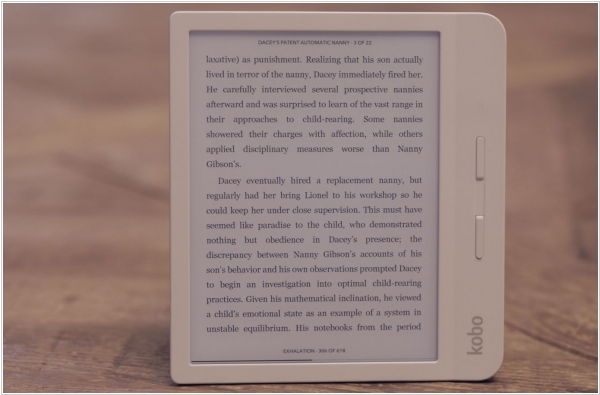
The new Kobo Libra H2O brings the sleek form factor of the Forma e-reader to a 7-inch screen device, retailing at a relatively affordable price of $170. Although it may not be the cheapest option in the e-reader market, it's a positive development to witness some of these advanced features becoming more accessible. The device's form factor is highly functional, allowing users to read in both landscape and portrait orientations, with automatic screen rotation thanks to the built-in accelerometer. Kobo has also made software improvements, enhancing menus, book scrubbing, and previews for a smoother reading experience. Additional convenient features include the ability to adjust front light intensity by swiping the screen's side and the device being waterproofed with an IPX8 rating, ensuring protection against water damage.
2014. Kindle Update for e-readers lets enables sharing books with your family
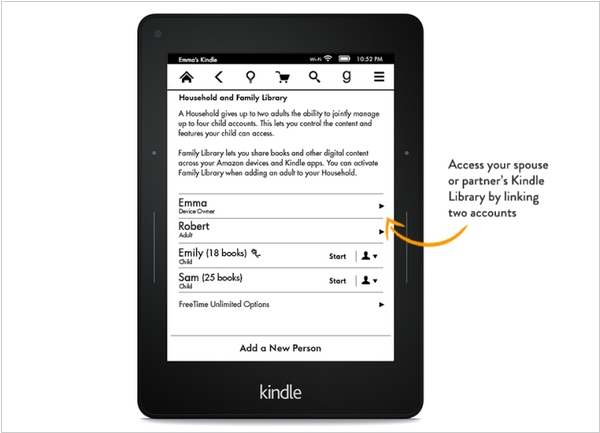
Amazon has released an update for Kindle e-readers, bringing new e-reading features previously exclusive to the Kindle Voyage to older Kindle models. The update introduces several enhancements, including Family Library, which enables users with linked Amazon accounts to access and read books previously downloaded by family members. Additionally, the Word Wise feature automatically displays definitions for challenging words above them, aiding comprehension. The Enhanced search function now provides results from not only your library but also Goodreads and the Kindle Store. Lastly, the About This Book feature offers valuable information such as author biographies and other titles in the series as you commence reading. The update is compatible with the Paperwhite 2nd generation, Kindle Voyage, and the most recent low-end Kindles.
2014. Amazon unveils $199 Kindle Voyage and new simple Kindle ereader with touchscreen

Amazon has recently unveiled the 7th generation of Kindle, including the premium and highly advanced e-reader called Kindle Voyage, as well as the new and simplified Kindle ereader. The Kindle Voyage boasts several notable features, such as a 20% faster processor, double the storage capacity, and the addition of a touch interface. Priced at $199, whether or not you should purchase it depends on your preference for page turning methods. The Kindle Voyage incorporates two thin lines on either side of the reader's face, allowing for effortless page advancement and reversal with a gentle press. Amazon has even incorporated subtle haptic feedback to provide a tactile confirmation. Alternatively, users can also swipe on the touch screen to navigate through pages. It is worth noting that the Kindle Voyage offers a flat glass, high-resolution screen, as well as a brighter, self-adjusting light to enhance the reading experience.
2012. Amazon unveils Kindle Paperwhite and Kindle 5
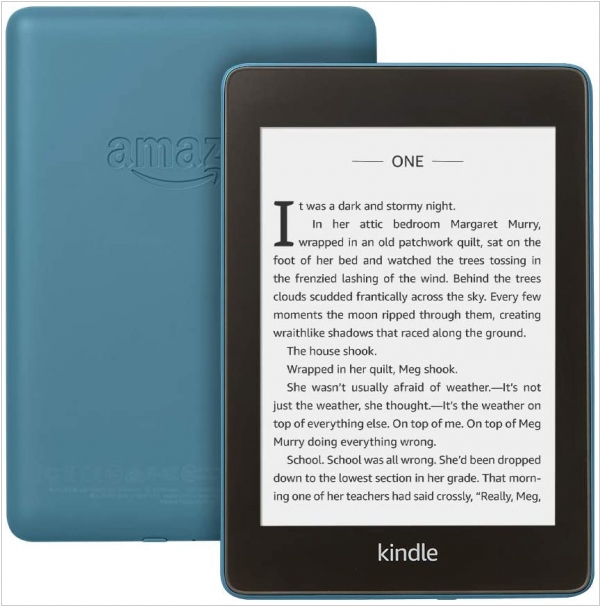
In the ongoing competition among e-readers, Amazon has recently introduced two new devices, namely the affordable Kindle 5 and the "frontlit" Kindle Paperwhite. The latter model is set to rival the Nook Simple Touch with Glowlight and Kobo Glo. While all these e-readers allow for reading in the dark, the Paperwhite appears to outshine its competitors. Its screen offers a nearly perfect white display, whereas the Nook still retains a slight grayish tinge. Furthermore, Amazon has made improvements to the battery life, claiming up to eight weeks of usage even with the light turned on, surpassing the Nook's one-month estimate. The Kindle Paperwhite features a touch screen and serves as a replacement for the Kindle Touch in Amazon's e-reader lineup. Notably, the Paperwhite lacks audio capabilities and Text-to-Speech functionality, resulting in a more compact and lightweight device. It comes with 2 GB of storage, a reduction from previous Kindle models that offered 4 GB. The Paperwhite is priced at $179 for the Wi-Fi/3G version and $119 for Wi-Fi only, with an additional $20 charge for removing special offers from the lock screens (although it may go unnoticed by most users). For reference, the Nook Simple Touch with GlowLight (Wi-Fi) is priced at $139. As for the second model, the Kindle 5 is the latest iteration of the basic Kindle e-reader, offering no significant changes compared to the Kindle 4 except for a color change from gray to black. However, it is priced $10 cheaper at just $69 (with Special Offers). For more information, you can also explore: Why you need a Kindle collection manager.
2011. Amazon launches Kindle 4
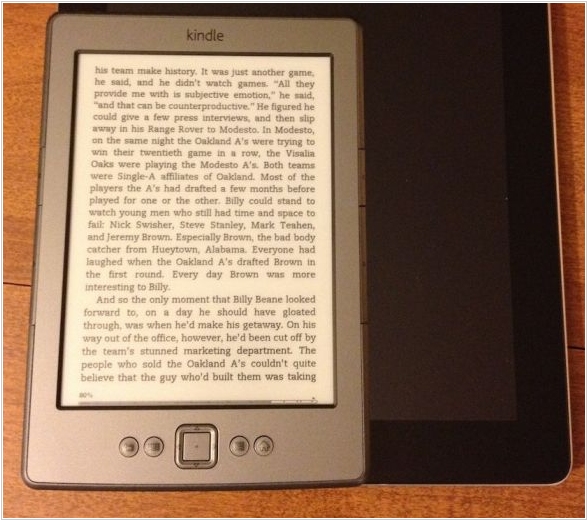
The new Kindle 4 boasts a 6-inch, 600x800 E-Ink Pearl screen, which remains largely unchanged from the previous model. However, significant hardware differences can be observed. The traditional keyboard found in previous Kindles has been replaced with four physical buttons and a "five-way controller," a directional pad encircling a central button. Text input is now achieved using this controller and an on-screen software keyboard, which, although less convenient, contributes to a reduction in size and weight. Holding the Kindle with one hand during extended reading sessions remains comfortable. Internally, the Kindle incorporates budget-friendly components to achieve its affordable $79 price point. It supports Wi-Fi speeds of up to 72.2 Mbps and includes 256MB of RAM and 2GB of flash memory. Powering these features is an 890mAh 3.7 V battery, which Amazon claims can last for approximately one month.

